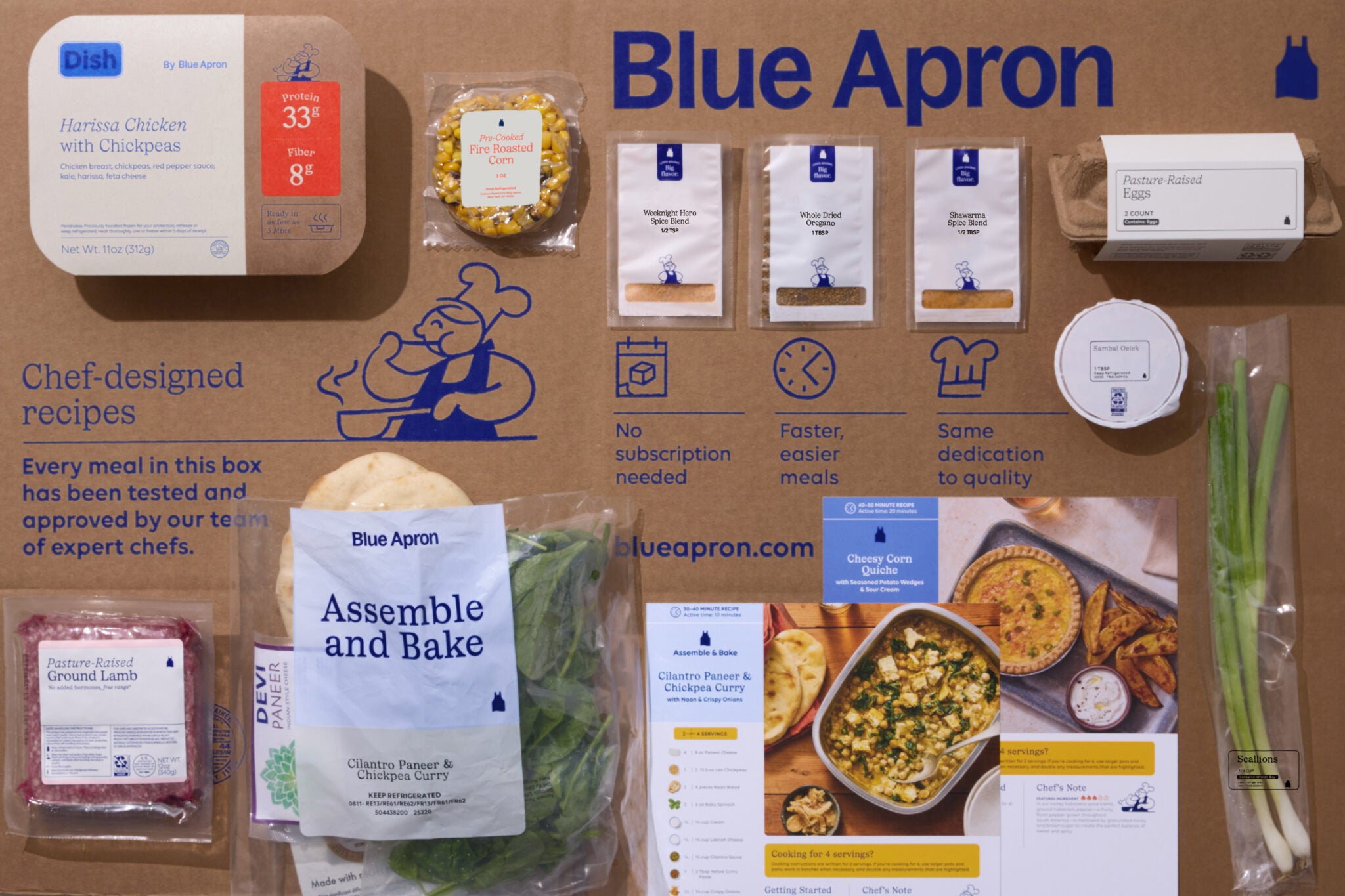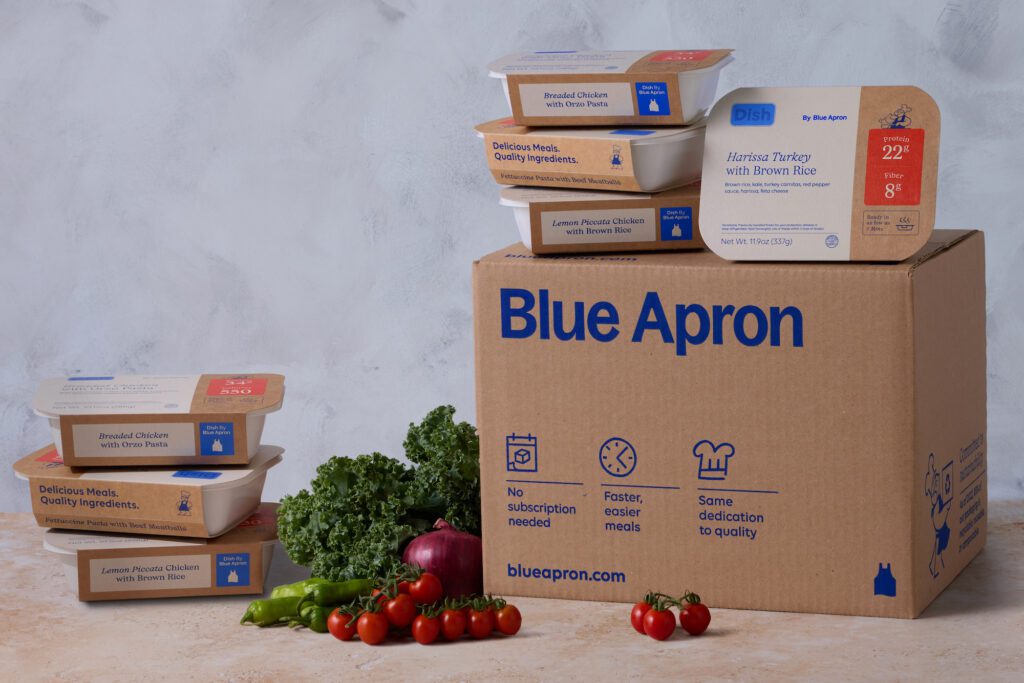A comprehensive relaunch calls for a comprehensive marketing plan.
On Aug. 11, meal-kit company Blue Apron introduced expanded offerings, an upgraded digital experience and new creative. Even more significant, it shed the subscription model on which it had been founded in 2012. Having changed just about every aspect of its business, Blue Apron is now taking a multi-pronged approach to communicating those changes to customers and prospects alike.
Wooing a Broader Audience
“Over the past year we’ve listened to a ton of customer feedback [and] studied shifting consumer behaviors,” says Head of Marketing Raina Enand. “We’ve done a lot of surveys, a lot of qualitative studies, a lot of quantitative studies. I think the main takeaways were, people want flexibility, control, no friction. They just want us to make their life easier.” At the same time, customers didn’t want to sacrifice the quality that had been baked into Blue Apron’s brand from the beginning.
The company’s subscription plan, which required customers to order meal kits on a weekly basis, was anything but flexible. While it had served the original audience of professionals who lacked cooking skills but wanted to learn how to prepare meals from scratch without heading to a supermarket, Blue Apron is now looking to serve a wider audience that includes busy families.
So while Blue Apron still offers its flagship meal kits, complete with all the necessary ingredients and instructions, they are now sold à la carte rather than as part of a subscription. The company also added two other types of meals. The ingredients for the Assemble & Bake dishes come pre-chopped and prepared and are designed to be cooked in one pot or pan; the single-serving Dish by Blue Apron meals are microwave- and oven-ready. “We’re offering different options based on what makes the most sense for you and your family,” Enand says.
As a substitute for the weekly subscription model, Blue Apron has introduced an autoship option that enables customers to set up their own recurring delivery schedule and receive a 5% discount. Consumers can also enroll in the Blue Apron+ membership plan, where for $9.99 a month they receive free shipping as well as access to Tastemade+, streaming video content, recipes and other content. Both Blue Apron and Tastemade, as well as food delivery service Grubhub, are owned by food-hall company Wonder.
Pulling Every Communication Lever
The cross-departmental development stage, which entailed everything from the creation of new meals to the website overhaul, took roughly nine months. “Because it was a full 360-degree relaunch, there were a lot of parallel trains that were moving at the same exact time,” Enand says.
The rebranding, however, was not one of those trains: That couldn’t start until the business strategy had been firmly locked down. And a redesign was essential, Enand says. “We really needed customers to understand this is not what it used to be. My concern was if we kept the existing brand, people wouldn’t understand the fundamental significance of the changes.” Working with Associates by Design, Blue Apron completed a full brand redesign in three- to four-month periods. The new branding includes a mascot, Sous, an illustrated chef in a toque who can be seen on packaging and digital assets.

A Two-Pronged Comms Strategy
To more explicitly communicate the changes, Enand developed two strategies, one “aimed at existing Blue Apron customers and how do we hold their hand into the 2.0 world,” and the other targeting new and lapsed customers. Both strategies relied on a gamut of channels, including email, push notifications, package inserts, social media and, for existing customers, two direct mail pieces. It also included partnering with customer service to ensure they have the necessary information to answer customer queries. “If there was a way to reach a customer, we’re pulling that lever,” Enand says.
Given how all-encompassing the relaunch was, Blue Apron is also making sure to “break down each change into a bite-size nugget,” Enand continues. There are communications dedicated to the move away from subscriptions, each new product line, the Blue Apron+ plan and other individual elements. “They’re all independent. We’re not mixing all of these things in one giant email.”
While the prospecting campaign will be ramping up in earnest in conjunction with back-to-school season, Blue Apron has been sending customers daily emails since launch day, with each detailing a different change. It’s also monitoring feedback on social platforms and customer service comments and adjusting the emails to better address any questions and concerns. Hours after going live on Aug. 11, for instance, it tweaked the emails scheduled for the subsequent two days. “We’re actually adjusting our communication strategy in real time,” Enand says.





 Network
Network

